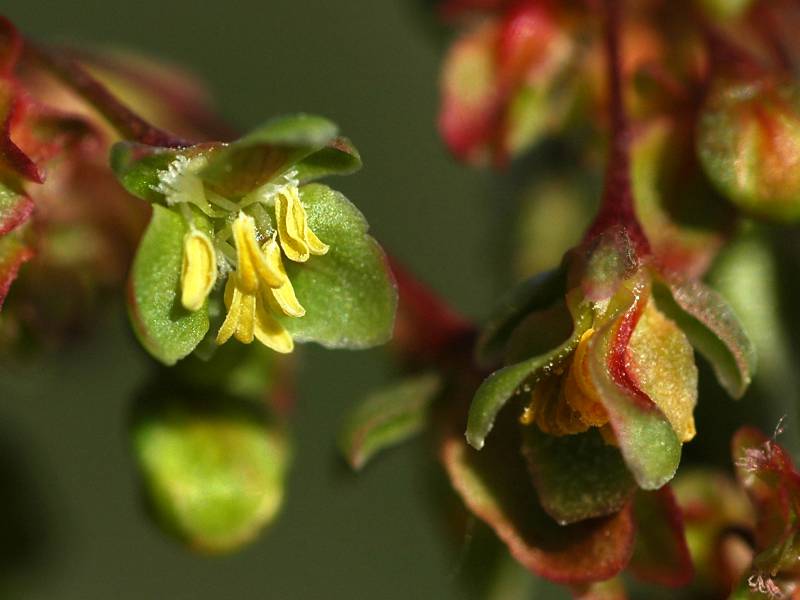Rumex crispus
Rumex occidentalis
curly dock, sour dock
western dock, western dock o n
Basal leaves with sheathing stipules and long petioles, the blade oblong-lanceolate, 1-3 dm. long and up to 5 cm. wide, rounded or wedge-shaped at the base;
cauline leaves reduced upward; all leaves with irregularly curled margins.
Basal leaves several, with sheathing stipules and long petioles, the blade oblong-ovate or oblong-lanceolate, 10-30 cm. long, cordate at base;
cauline leaves few, much reduced upward.
Inflorescence a large, compact panicle, the branches nearly erect, leafy-bracteate to mid-length;
pedicels slender, 1.5-2 times as long as the flowers, with a swollen joint well below mid-length;
flowers perfect; outer 3 perianth segments ascending, 1.5 mm. long; inner 3 segments deltoid-ovate with a truncate base, 4-5 mm. long, usually with an oblong, veiny and pitted lump at the base;
styles 3.
Inflorescence a large panicle, leafy-bracteate below, the branches ascending;
pedicels slender, 2-3 times as long as the flowers;
flowers perfect; outer 3 perianth segments 1.5-2 mm. long, not reflexed; inner 3 segments triangular to oval, 3-11 mm. long, truncate at base, entire or denticulate on the margins, strongly veiny;
styles 3.
Achene 1.5-2 mm. long, smooth.
Achene about 4 mm. long, smooth.
Rumex crispus
Rumex occidentalis
- Local floras:
BC,
CA,
OR,
WA
- Local Web sites:
CalFlora,
CalPhotos,
Flora NW,
PNW Herbaria,
Turner Photog.
WildflowerSearch
iNaturalist (observations)
USDA Plants Database
- LBJ Wildflower Center
- SEINet
- Plants of the World Online
- Encyclopedia of Life
- Wikipedia
- Google Image Search
- Local floras:
BC,
CA,
OR,
WA
- Local Web sites:
CalFlora,
CalPhotos,
Flora NW,
PNW Herbaria,
Turner Photog.
WildflowerSearch
iNaturalist (observations)
USDA Plants Database
- LBJ Wildflower Center
- SEINet
- Plants of the World Online
- Encyclopedia of Life
- Wikipedia
- Google Image Search



